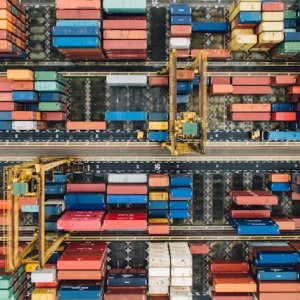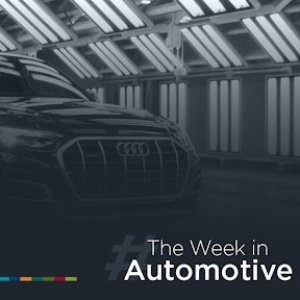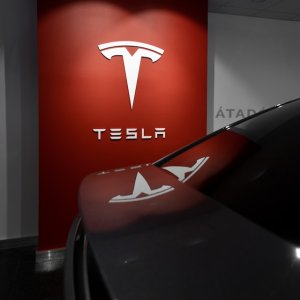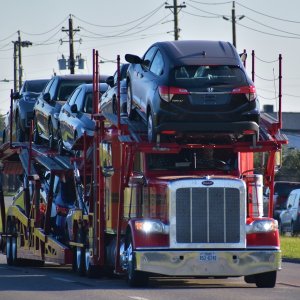Heavy-Vehicle Industry in the Midst of a Major Transition

STORY INLINE POST
Q: What is the outlook for the Mexican heavy-vehicle industry?
A: In 2020, heavy-vehicle manufacturing facilities in Mexico had to close for almost two months due to pandemic. We had to explain to the government that the industry was essential, as was the case in the US and Canada. In terms of production and sales, 2020 was a critical year. In 2021, both indicators started to increase and the sector is now seeing a slow recovery.
In 1Q22, heavy-vehicle sales increased by 16.7 percent and exports by 6 percent. However, we are still 14 percentage points behind pre-pandemic sales figures. The internal market demand has caused an increase in production. Full recovery has not been reached due to the ongoing issues impacting the industry and the world, such as semiconductor shortages and supply chain disruptions. Some companies expect to resolve their semiconductor shortage in 2Q22 but others expect to face this problem until 2023, depending on the brand and the origin of its technology. It is possible that the sector will not return pre-pandemic figures until 2024.
Q: Besides semiconductors, what challenges is the industry still facing?
A: Mexico exports mainly to the US, Colombia, Peru and Chile and there is always demand. The problem is that the supply chain is not synchronized. In recent years, suppliers of diverse auto parts have faced a variety of issues. In addition to logistics problems, there have been increases in the cost of raw materials and transportation, container hurdles, the Ukraine-Russia conflict and congestion at the Shanghai port.
The current crisis began with the semiconductor shortage but has now worsened due to the lack of synchronization, which delays the entire supply chain. Sometimes trucks are almost ready to be sold but are missing very specific, small parts. For example, a truckmaker might have 100 trucks ready but it is missing the right electric switch for a window. In these cases, considering the urgent demand, carriers buy those trucks and then return whenever the missing parts arrive to get them installed.
Q: How is the Mexican heavy-vehicle industry adapting to electrification and natural gas trends amid ongoing challenges?
A: The challenging circumstances have also impacted the way vehicles are produced. Practices such as just-in-time manufacturing are impossible now. New trends, such as nearshoring, have become stronger, potentially leading to the reconfiguration of North American supply chains. This transformation comes amid the heavy-duty vehicle industry’s transition toward net-zero operations.
Mexican production is composed of 99 percent diesel vehicles, while natural gas and electric heavy-duty vehicles represent less than 1 percent. However, this trend will gradually change toward cleaner vehicles and manufacturing operations across the supply chain.
Mexico is the top exporter of tractor trucks in the world, the fourth-largest exporter of heavy-duty freight vehicles, the fifth-largest manufacturer of passenger and freight heavy-duty vehicles and the eighth-largest manufacturer of buses worldwide. Mexico’s largest challenge is to remain a global leader during the transition to cleaner heavy vehicles, including electric units.
Q: How important is it for Mexico to renew its heavy-vehicle fleet?
A: Mexico needs a balance between what is desirable and what is feasible. Many say that the country should have predominantly EVs but this will take time. Mexico’s heavy-vehicle fleet has an average age of 23.9 years in the case of two- and three-axle trucks, 17.7 years for tractor trucks and 17 years for buses. Before electrification, the main challenge in Mexico is renewing the fleet, a crucial step in the industry’s transformation that will benefit all of society. Emissions and accidents are caused mainly by older trucks. Most owner-operators own between one and five trucks in Mexico. The challenge is to provide tools for these small-business owners that enable them to renew their fleets. It is difficult for them to invest in their fleet renewal and still have cash flow.
Q: How should fleet renewal be promoted and what is the importance of decarbonizing the supply chain?
A: The country needs public policies to promote fleet renewal. The new General Law of Mobility and Road Safety was recently approved. While this regulation originated within that part of society that wants to improve mobility by using bicycles and walking, the next important piece is buses and mass transportation. Heavy vehicles are crucial for logistics and the pandemic proved it. Without them, we cannot survive.
We need to reduce vehicle emissions and generate zero-emission supply chains. Exports to the EU may require net-zero production, so it is not possible to backtrack from these decarbonization trends.
Q: How does ANPACT work to promote environmental and gender equality trends?
A: ANPACT is committed to the environment. We will focus on working with the authorities to boost the adoption of cleaner technologies. ANPACT is convinced that the authorities and the industry, together, can push Mexico toward adopting more inclusive, cleaner transportation that improves mobility for millions.
We are working with the federal government. Financing is limited but certain states are promoting their own programs for buses fueled by renewable sources. Financing schemes and a regulatory framework that promotes sustainability should be prioritized. ANPACT is also working to promote gender equality through its “MujerEsAutotransporte” platform.
Q: What are the main points addressed and the areas of opportunity in the General Law of Mobility and Road Safety?
A: The new General Law of Mobility and Road Safety includes several positive aspects, such as vehicle modernization, which is the first step toward promoting newer technologies. Among the areas of opportunity is the promotion of financing. ANPACT is also urging Congress to continue improving regulation regarding road safety and emissions reduction. The country needs to get its older trucks off the highways and acquire cleaner, safer trucks.
Q: How does ANPACT collaborate with the government to promote beneficial initiatives for the heavy-vehicle industry?
A: Currently, ANPACT has a good relationship with the government. Most public policies are not orientated toward small businesses but toward individuals. There is a big area of opportunity to support SMEs. The sector’s economic impact is large, representing almost 6 percent of the country’s GDP and generating 3 million jobs. Also, there is a large opportunity regarding highway security.
The government is applying subsidies so diesel prices remain stable, which is expensive. Public and private sectors must align common goals for the future well-being of Mexico. ANPACT is collaborating with the government to improve safety regulations in Mexico and promote new technologies to reduce emissions, including natural gas and ultra-low sulfur diesel (ULSD). There are interesting alternatives to reduce emissions but we need regulations. For example, there is still no regulation regarding EVs in Mexico.
Q: How has ultra-low sulfur diesel grown in availability and how has it pushed the adoption of Euro VI technology?
A: Due to the lack of investment, Mexican refineries cannot produce 100 percent ULSD. They mainly produce regular diesel. However, the government has promised that the Dos Bocas refinery will be inaugurated in one year and that the Tula refinery will be remodeled.
Few companies are buying Euro VI because ensuring the supply of ULSD is difficult. ULSD must be made available and those that sell it must advertise it so truckers know where to acquire the fuel. According to CFE, pumps dispatching ULSD must have a sign to inform truck drivers. These signs should be larger and be located outside gas stations so everyone knows where ULSD is being dispatched. Gas stations also face challenges ensuring ULSD is available on a daily basis. Furthermore, gas stations use the same pump for both regular and ULSD.
Q: How does ANPACT support SMEs and small owner-operators?
A: ANPACT, in collaboration with other associations, launched the EducaT portal to help SMEs to learn about the industry and remain up to date. The portal offers over 100 different courses, some of them for free.
There are several challenges within the heavy-vehicle industry. Fleet renewal remains essential for the country and we need to incentivize financing to support this initiative. While there are several financing companies in Mexico, including the financial arms of OEMs, there are still major opportunities in the country, such as leasing. Leasing in Mexico is low in comparison to other countries. We must continue working with the government to improve some regulations to help leasing become more feasible.
The National Association of Bus, Truck and Tractor-Trailer Manufacturers (ANPACT) represents heavy-vehicle and engine producers in Mexico. It promotes the development of the commercial vehicle industry.








 By Antonio Gozain | Senior Journalist and Industry Analyst -
Fri, 05/13/2022 - 10:30
By Antonio Gozain | Senior Journalist and Industry Analyst -
Fri, 05/13/2022 - 10:30















